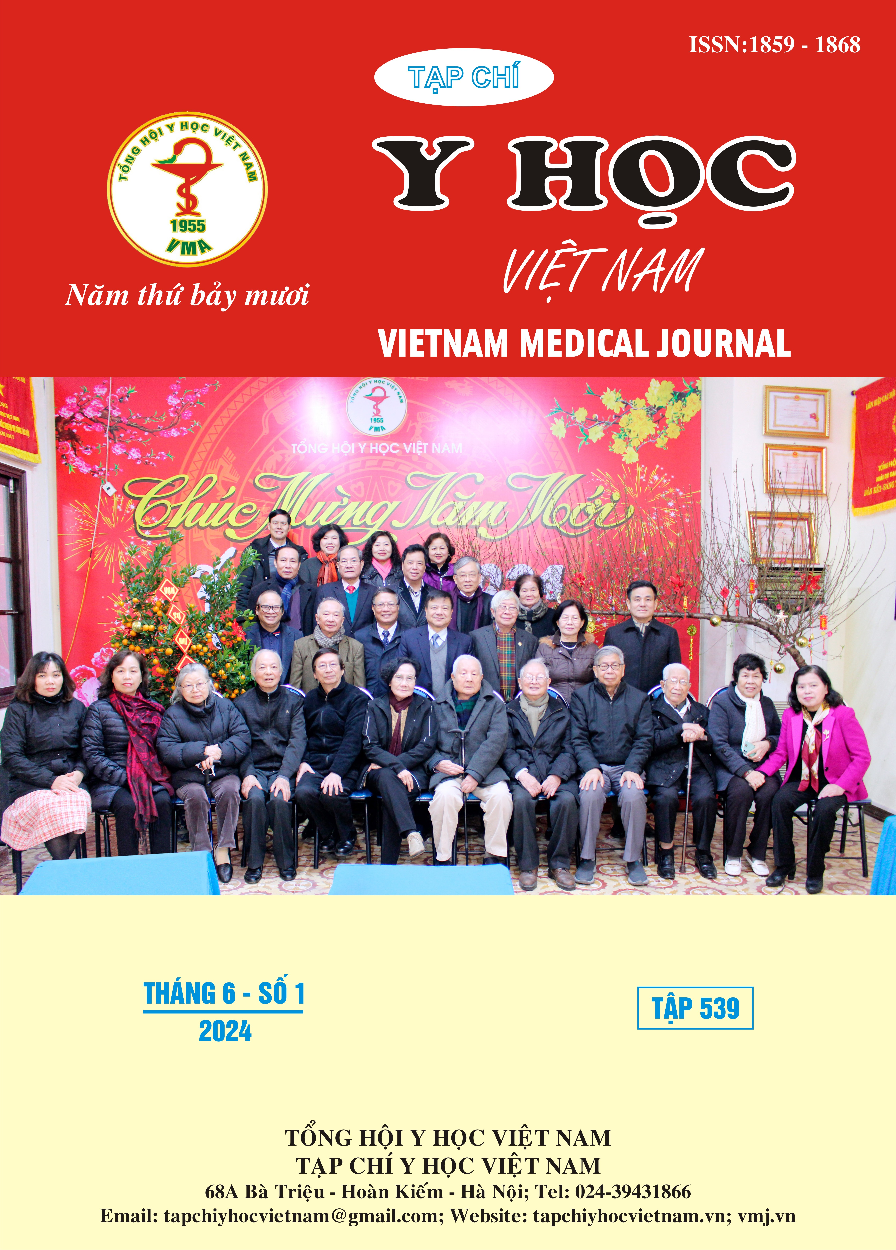ORBITAL TUMORS: TWO CASES REPORT AT VIET TIEP FRIENDSHIP HOSPITAL AND REVIEW OF LITERATURE
Main Article Content
Abstract
Background: Orbital tumors are tumors that appear in the eye socket, a fairly rare disease with an incidence of 3,5-4%. Tumors can be benign or malignant, located in narrow areas, related to complex anatomical structures, causing difficulties in diagnosis as well as tumor remove treatment. The main symptoms that cause patients to see a doctor are exophthalmos, decreased visual acuity and visual field loss with expression: double vision, visual field defects or loss. Currently, with the development of imaging diagnostic tools, it is possible to accurately assess the location and related organizations of Orbital tumors, from that provide appropriate strategies and approaches to the tumor to minimizing damage when removing the tumor, preserve the integrity of the eyeball and restore the eye's visual field in the most optimal way. We describe two cases of Orbital tumors with visual acuity and visual field were damaged severe that were diagnosed and treated with microsurgery to completely remove the tumors at Viet Tiep Friendship Hospital, from that comparing the medical literature and treatment strategy for this lesion. Methods: This was a retrospective study of two patient with Orbital tumors who was successful treated by microsurgery exenteration to completely remove the tumor, preserve the integrity of the eyeball. Results: No complication relate to microsurgery exenteration and visual acuity and visual field were restored. Conclusions: The Orbital tumor includes many different types of injuries have same symptom clinical: exophthalmos, damage to visual acuity and visual field. Accurately diagnostic the location and level of invasion based on tomography and magnetic resonance imaging. Microsurgery remains the mainstay of treatment, allowing the tumor to be removed without affecting the eyeball and optic nerve as well as other important anatomical structures.
Article Details
Keywords
Orbital tumors, exophthalmos.
References
2. Tim E.D, Guiseppe L (2021), An introductory overview of orbital tumor, Neurosurg Focus, vol 10 (5), Article 1.
3. Daniel M.K, Frenderick A (1976), Ophthalmic striated muscle neoplasms, Survery of Opthalmology, Volume 21, Issue 3, November–December 1976, Pages 219-261
4. Nguyễn Đức Liên, Hoàng Văn Luyện (2021), Đánh giá kết quả điều trị phẫu thuật u hậu nhãn cầu tại bệnh viện K, Y học Việt Nam, 508 (1), 257-261.
5. Lê Huỳnh Phương (2012), U hậu nhãn cầu: kinh nghiệm chẩn đoán và điều trị phẫu thuật, Y học thành phố Hồ Chí Minh, 16 (4), 273-281
6. Boriana P, Chavdar B, Dessislava S (2007), Orbital Tumor – Clinical Cases Presentation, Journal of IMAB – Annual Proceeding (Scientific Paper), vol 13(1), 47-50.
7. Abuzayed B, Kucukyuruk B (2012), transcranial superior orbitotomy for the treatment of intraorbital intraconal tumors: surgical technique and long-term results in single institute". Neurosurg Rev, 35(4), 573 -582
8. Margalit N, Ezer H (2007), Orbital tumors traeted using transcranial approaches: surgical technique and neuroophthalmogical results in 41 patients, Neurosurg Forcus, vol23(5), E11.


